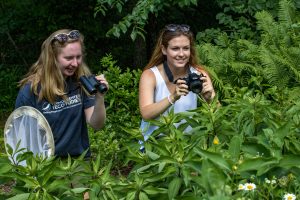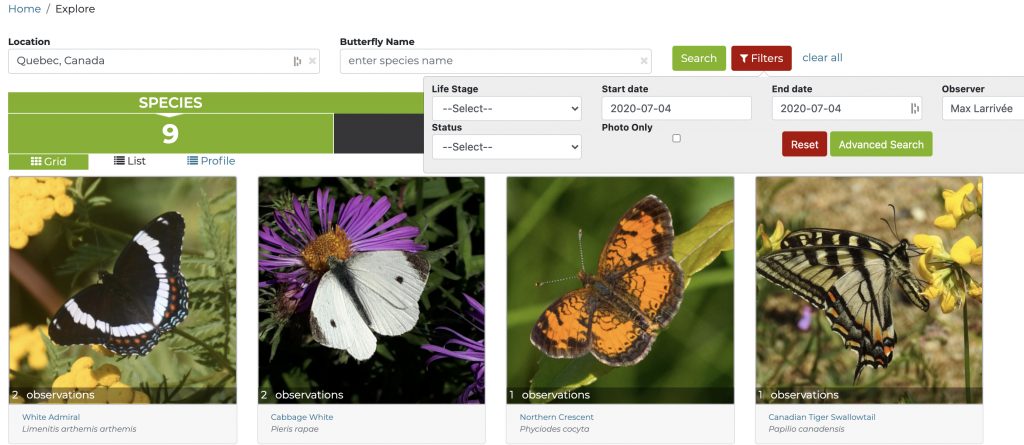eButterflying Your 4th of July Count
 The 4th of July Butterfly Count season is here! Each year, hundreds of butterfly enthusiasts participate in a cooperative effort to count butterflies within established 15-mile diameter survey circles. Most counts depend on the efforts of multiple parties, with each individual or team checking different parts of the survey circle, then combining their counts into a final count total. These tallies are then used to compare between years. The counts are an important and long-running survey that help understand changes in butterfly populations at large scales. Your checklists can also be important for eButterfly too!
The 4th of July Butterfly Count season is here! Each year, hundreds of butterfly enthusiasts participate in a cooperative effort to count butterflies within established 15-mile diameter survey circles. Most counts depend on the efforts of multiple parties, with each individual or team checking different parts of the survey circle, then combining their counts into a final count total. These tallies are then used to compare between years. The counts are an important and long-running survey that help understand changes in butterfly populations at large scales. Your checklists can also be important for eButterfly too!
Here are our tips for making eButterfly part of your annual 4th of July count tradition.
- Start a new checklist at each place you butterfly: we recommend beginning a new complete checklist every time you are at a new place. Use the Incidental protocol for lists you keep while randomly seeing butterflies between places. Perhaps you visit a wetland, then you drive to a meadow nearby and on the drive you see two Monarchs fly across the road. The wetland you visited is your first complete checklist. The two Monarchs you clearly saw while driving can be shared as an incidental report. And the meadow you walk back and forth across is another complete checklist.
- Report only one-way distance in your traveling counts: eButterfly measures distance as one-way distance, especially if you backtrack or repeat portions of a route. You can use Google Maps, gps device, or smartphone or watch apps to track distances.
- Only submit lists of butterflies observed by your group: do not combine your lists with those from other watchers that are not with you at your location or other sections. It is not appropriate to enter totals for the entire count circle. eButterfly relies on shorter distances, smaller areas, and ideally, complete counts.
- Enter once and share among your group. Only one person in the group needs to submit the checklists and then they can share it with everyone else in the group that contributed to that checklist. Everyone gets credit for their observations in eButterfly!
Compiling your count results for the day
When all your checklists for the day are entered in eButterfly, compiling totals is easy. Just go to Explore and click on the red Filters button. Add the date of your count and your name as the observer. Hit the green Advanced Search button and you results will appear.
Every time you raise binoculars and cameras to record a butterfly sightings, you collect important data. Recording the number, date, and location of each and every butterfly, no matter how common or rare, may seem trivial, even repetitive— but this detailed information can be invaluable to science and conservation. Butterflies act as early warning signals for habitat degradation, climate change, and other ecological forces. Community science programs like eButterfly allow you to submit checklists from anywhere, and can quickly amass large volumes of both historic and current observations. eButterfly is the tool for any butterfly enthusiast. You don’t have to be an expert to make a difference. Everyone can play a part, and it couldn’t be easier. Just login to eButterfly and contribute your butterfly discoveries!
